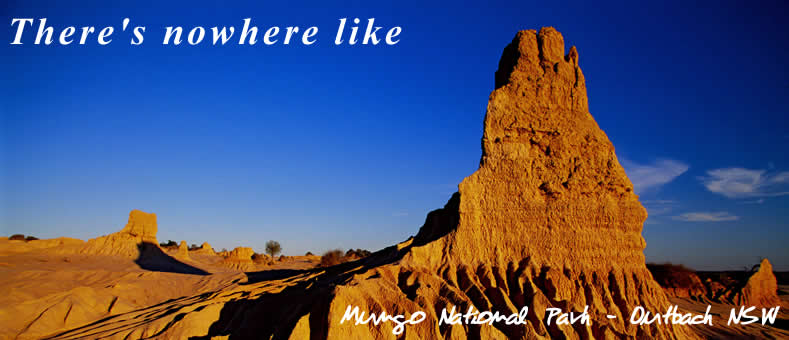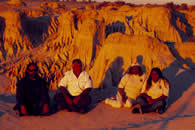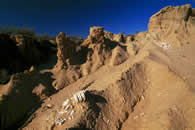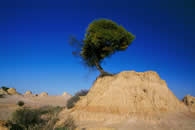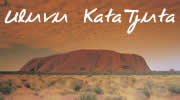Mungo National Park. New South Wales
Mungo National Park is a part of the Willandra Lakes World Heritage area, a chain of dried out lakes that were once strung between Willandra Creek and the main channel of the Lachlan River in Outback New South Wales.
15,000 years ago this vast, sparse mulga studded flat plain was a huge lake. Along the eastern edge is a 22 km crescent-shaped wall of sand and clay eroded in time into weird and fantastic formations, called the Walls of China by Chinese station workers in the 19th century. These dunes of mud and sand, are continually eroding by wind and water. This fragile landscape of crinkled, fluted outcrops and shifting sand, changes colour in the daytime from khaki to vibrant yellows, oranges, and deep reds at sunset.
Mungo National Park is significant to the Aboriginal people and preserves the record of ancient lives and stories. It was here in 1969 that the oldest recorded cremation in the world was found – an Aboriginal woman more than 40,000 years old, known as Mungo woman. Skeletons of ancient mega fauna including extinct buffalo-sized wombats, giant kangaroos and Tasmanian tigers have also been found in the area.
Take a guided walk with an Aboriginal Ranger to learn about bush tucker and bush medicine and to discover ancient campfires littered with fragments of fish, shells and bones.
(all photo's courtesy of Tourism NSW)










